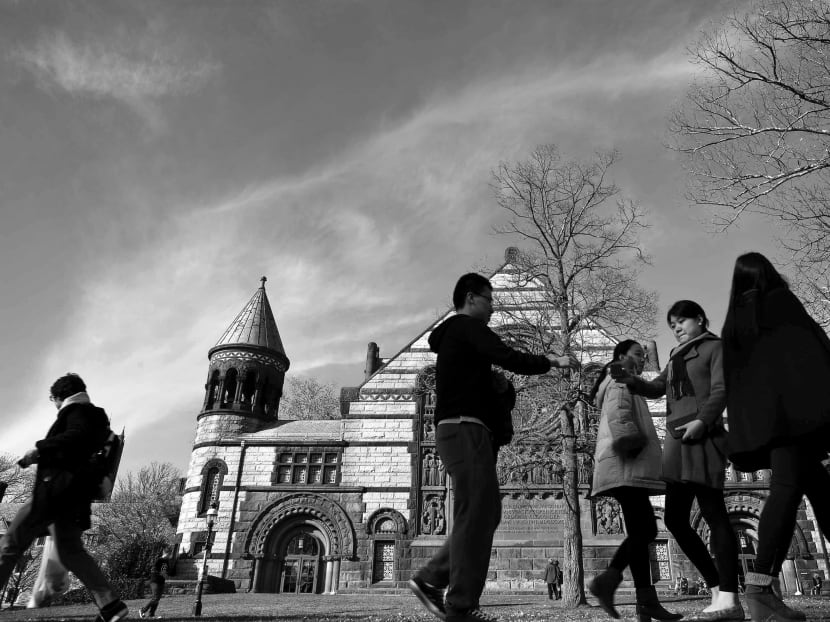From Western liberal learning to fusion education
American academics like to comment on the fact that just as liberal learning is undergoing a great challenge in the United States, it has become the country’s educational export, particularly to key parts of Asia — China, India and Singapore, to name a few.
American academics like to comment on the fact that just as liberal learning is undergoing a great challenge in the United States, it has become the country’s educational export, particularly to key parts of Asia — China, India and Singapore, to name a few.
Many Chinese universities in the last decade have begun to turn away from a Soviet system to a more analytical general learning in the early years of university. (They tend to call it “general education” or tongshi—“interconnected knowledge”.)
The University of Hong Kong is switching from a three-year to a four-year model. The University of Delhi is in the midst of a tumultuous debate about the same kind of transition. A recent conference at the Seoul National University’s College of Liberal Studies focused on “The Renaissance of Liberal Studies in Asian Universities”.
The National University of Singapore is partnering with Yale University to create a new liberal arts college, based on both old and new models of liberal learning.
Yet, the recent attention to liberal learning is at risk of becoming one-sided. Much of the conversation is about moving towards the more American model whereby broad learning and critical thinking is at the heart of education.
Rather than engaging with a wide variety of perspectives and thinking about effective curricula for global citizens from the “ground up”, participants in the debate tend to focus instead on the Western source of the change. Liberal curricula are then characterised as one of two extremes: Either the best of the educational systems in America — or educational neo-imperialism thinly disguised as something else.
ASIAN STRAINS OF CRITICAL THINKING
This way of thinking proceeds in only one direction, from the West to the East, and ignores the fact that many different kinds of Asian cultures have their own histories and literatures, which feature self-critique, critical thinking and interdisciplinary learning.
Are these traditions born of the European enlightenment? Of course not. But they nonetheless have become classics because they are meant to shape a person and, like all forms of liberal learning at their best, can nurture a kind of intellectual purpose, life long curiosity and critical, committed citizenship.
Just read, for instance, the debates among early Chinese philosophers of the Warring States period on the role of language and the nature of good governance. Or peruse the early Indian Upanishads, where characters argue passionately about the relationship between the force that inspires the self and the force that inspires the universe and about whether kings or priests have the right knowledge.
Look up early Asian versions of statecraft, whether the fourth century BCE Arthashastra’s use of ministers and spies in early India, or Mencius’ view of the ethical person’s relationship to government. And there are many more texts now being admitted (or re-admitted) to classical status in many different curricula, from Indian, Chinese and Tibetan Buddhism to Taoism to secular classics and so on.
These are also the works that have made it into Western curricula on Asian civilisations, in Asian Classics programmes.
And it is a little-known fact in many Western countries that Chinese students have been reading Western philosophical and political texts regularly, particularly in the early years of university study.
Both traditions are comprised of “great books” that are meant to animate the intellect and ignite passionate participation in society. While it would be unwise to read these texts as “blueprints” for a 21st century global world, they can still be powerful texts that can inform our thinking today.
EVOLVE CURRICULAR EXPERIMENTS
What is needed in all parts of the world is not an exportation of liberal learning from the “West” to the “East”. What is needed is fusion education — a slow, patient blending of both traditions where students from all these cultures, sitting in the same classroom, consider as many options in liberal learning as possible.
What is more, this practice cannot be a single model conceived behind closed doors and then “implemented” in a vacuum. Rather, it needs to be a model evolving out of educational efforts on the ground.
Western and Asian universities need to embark on a number of curricular experiments on their campuses, analyse learning outcomes and, in this way, develop a set of best practices.
The role and weight of particular classics will differ in each country — Singapore’s educational history will look different from that of Bangalore or Shanghai, and curricular will vary accordingly.
But this more mutual exchange of educational goods will allow a new form of liberal learning to emerge.
ABOUT THE AUTHOR:
Laurie L Patton is the Durden Professor of Religion and Dean of Arts and Sciences at Duke University.







